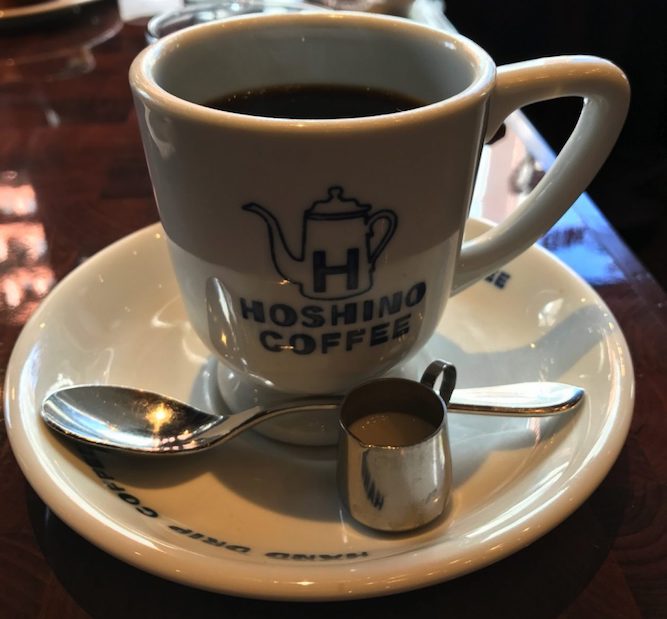I thought I lost my hat at one point today and then I realized I’d also lost my phone! At that point I thought I’d have to retrace my steps and miss my bus, but fortunately it didn’t come to that.
But first, breakfast!
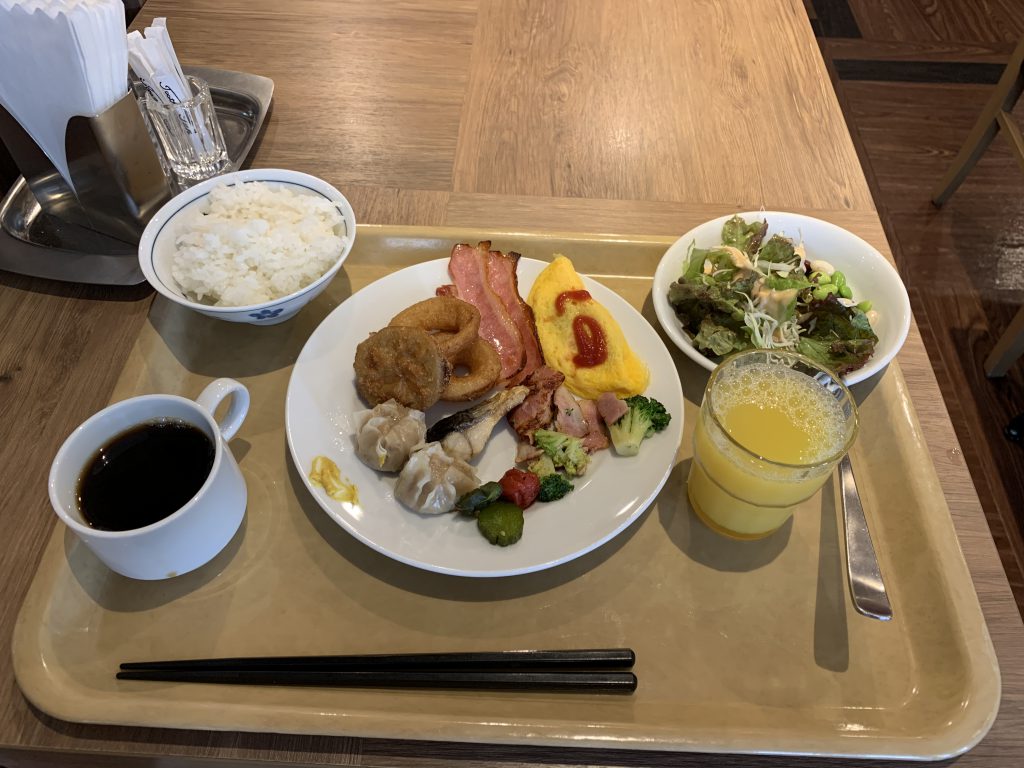
I couldn’t decide what to do on my spare day in Sabae, and I wasn’t feeling great about the place anyway. I’d given myself an extra day in case buying glasses in town took time, but just like dropping off my watch it was quicker than I thought. I thought about going back to Fukui on the train but I thought why not just see if there’s anything in town.
Turns out there’s a part of town where they make lacquerware and my new plan was to go there and see the Urushi Museum. Step one was to get to the tourist office that I was sure opened at 10AM to find out which bus to take. I also decided to take the “local” train down there. There was a lot of waiting around because the local train only runs every 30 minutes. There were newer models that looked like the light rail in Portland, but I got to ride the old beater.
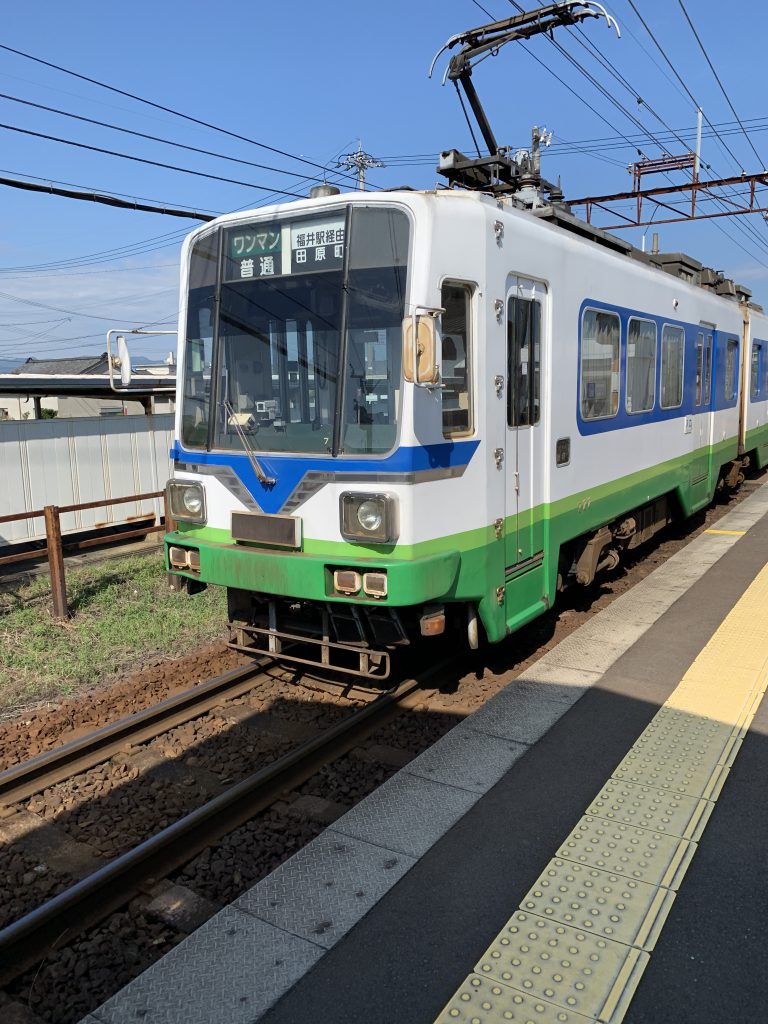
I made it to the tourist office only to have them tell me that the bus just left and I’d have to wait 45 minutes for the next one. They also told me that a park was nearby, about 10 minutes walking, and I should check that out. I found out it’s called Nishiyama-koen for a reason since it’s straight uphill to get to the zoo. And it was HOT out. I’m guessing it could’ve been 86°F (30°C) and deathly humid here. My small towel I carry with me was soaked before noon. But I made it up the hill, huffing and puffing most of the way, and I saw the small but free zoo. They have spider monkeys and pheasants and RED PANDAS! There’s a bunch of them (maybe a dozen?) in separate enclosures that are small and sad, but they’re kinda cute.
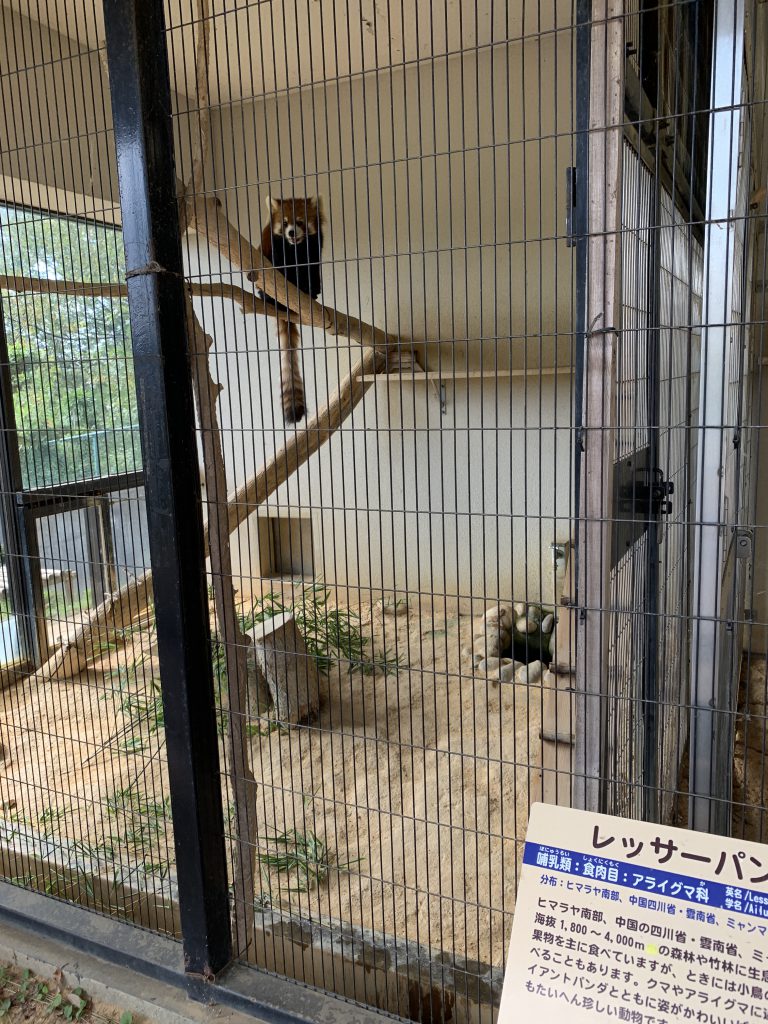
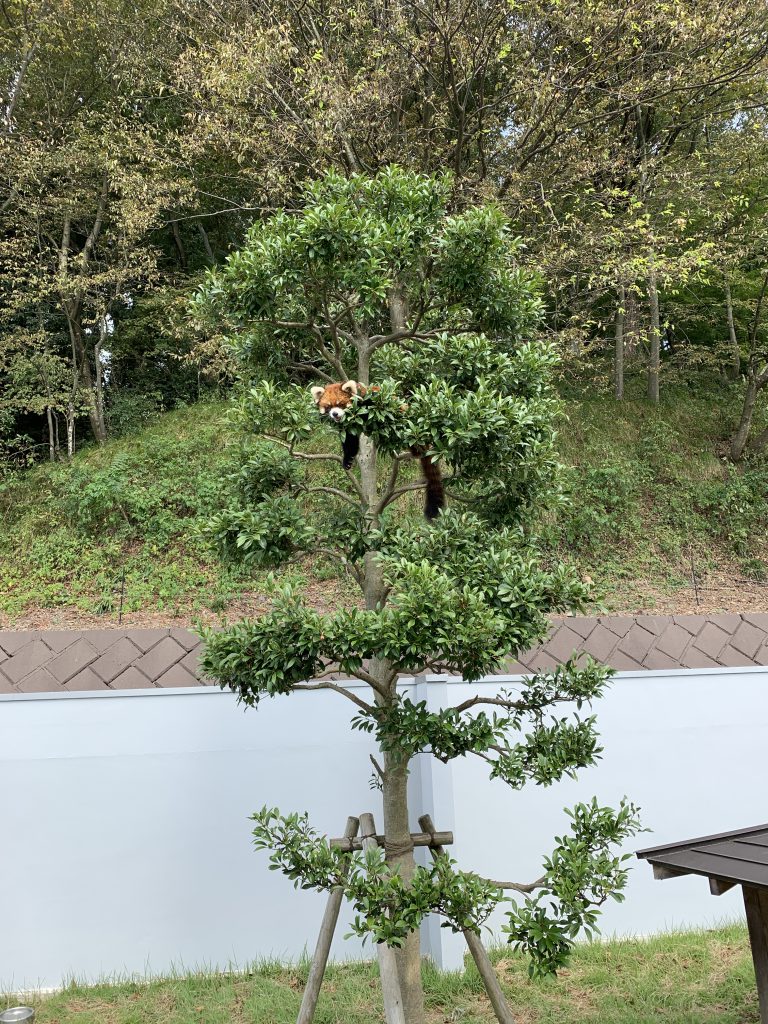 .
.
Those guys can climb, too!
I made it back in time for the 11:10 bus and was given a booklet with the schedules. It took 40 minutes to get to the museum and I was a little disappointed when it just looked like a store. But there were a lot of placards with descriptions along with small displays with QR code to get the English translation. I asked what the order of the placards were (they were numbered and the order seemed to jump around a bit) and they pointed out which hallways to follow as well as two more displays in separate buildings.
Tere’s an outbuilding with a lacquered cart used for festivals. It’s almost two stories tall! You can see the railing on the second floor where you can look down.
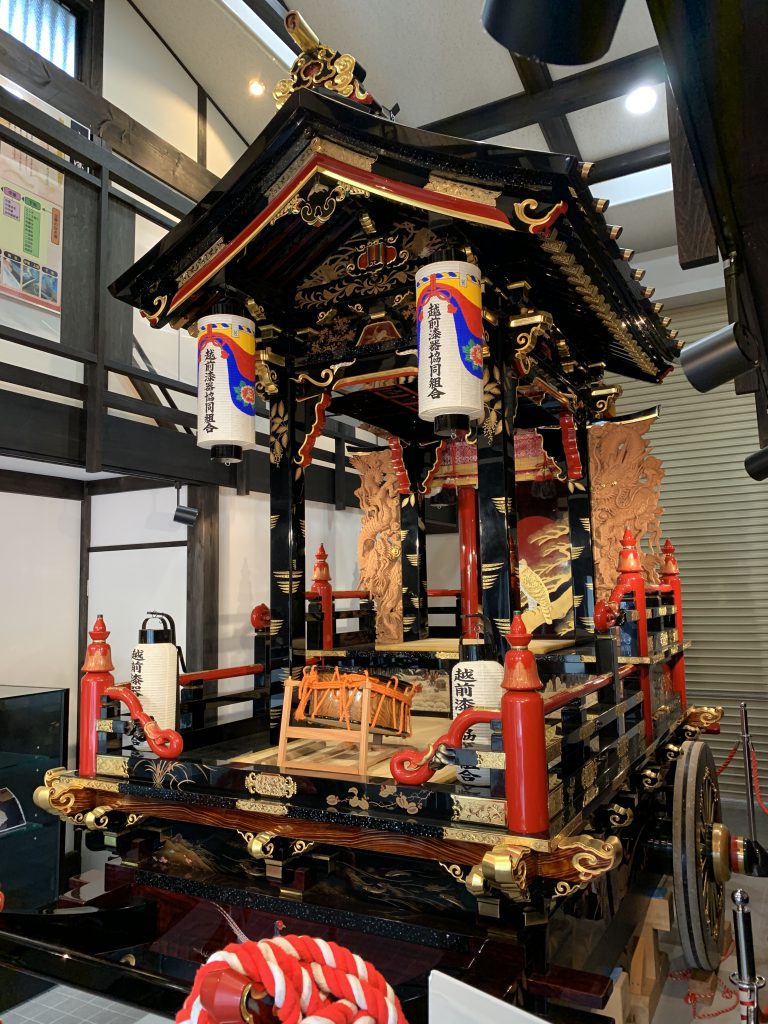
There’s a cafeteria on the way to the outbuilding and the food there is pretty good and inexpensive. I even had a local specialty, a rice bowl with ground yamaimo and yama uni.
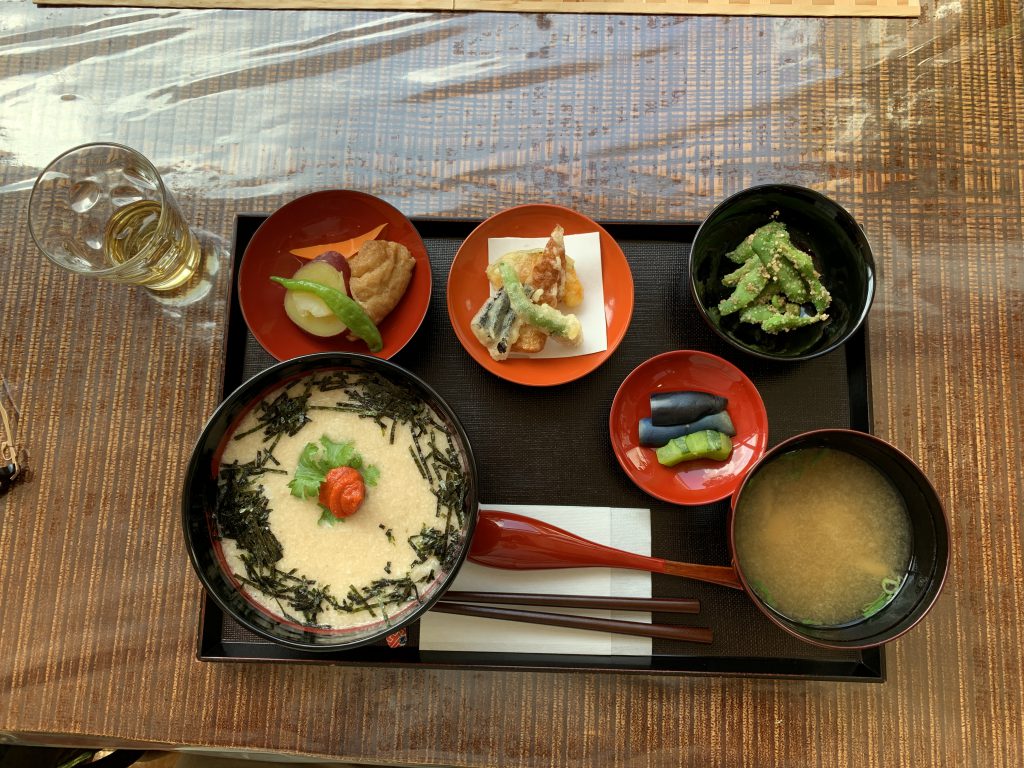
Yama uni isn’t sea urchin, but a paste made from local vegetables. Let me quote from the Sabae City web site.
“A Kawada area located in the Sabae-shi east is the producing center of “Echizen Lacquerware” which is traditional industry also original food culture using the climate of the mountain is an inherited area. The traditional condiments made with each house in this Kawada area “mountain sea urchin” grind and mix the simple material as the citron, the red chili pepper of ears with big earlobes (the red number), the red pepper and the salt carefully by an earthenware mortar, and are made.
By the quantity of the ingredient and an earthenware mortar, it’s ground, degree, a change is seen by the taste and you’re fonder as the taste of each home. When it’s rubbed carefully with big earthenware mortar, it’s considerable hard labor because there is also viscosity but as it is rubbed, it’s said that sweetness and flavor come out more, and I make an effort and am made.”
Ahem. At least it was tasty.
There’s also another outbuilding that has some studios where you can watch people make lacquerware. The woodworking area and the delicate work area weren’t being used so I watched a guy do the rough base lacquer painting. He was quite nice and we had a little chat. He told me to just go to the workshops throughout town and ask them to let me in.
After I was done with the museum (I took forever to buy a pair of travel chopsticks. Yeah, buying chopsticks like an American tourist.) it was only 1PM and I thought there was a bus back around 2:30PM. I looked at the booklet and all I could find was a bus at 3:50PM! (Turns out there was one at 2:28PM that could’ve taken me directly to the hotel, I think. But I didn’t know that at the time.) I had time to kill. I asked the museum for a map and they also told me there were many workshops and most of them would let me in if I asked. I wanted to see the shrine with the maki-e ceiling, but they told me I’d have to ask the area government to let me in.
The first thing I did was get lost. The second thing I did was walk up the hill to the shrine with the fancy ceiling but it looked old and abandoned. I saw a workshop next door, and they looked at me a couple of times, but I didn’t ask to to in. I couldn’t figure out where the entrance was. So back down the hill I went. After dithering a bit, I went back up to see if I could get their attention again but by this time they weren’t by their windows. I wandered around and the only greeting I got from the only person I saw was “It’s hot, isn’t it?”
I finally found a workshop that said “gallery” and I saw some people inside. I asked them if I could look and they invited me in. The lacquerware was beautiful and the items were hundreds or thousands of dollars. I don’t have the eye to tell, but some of the things looked spectacular. And older gentleman came over to chat, and eventually we got to talking about China. He was lamenting the fall of Japan and the craft work he was doing, and said China’s the future. He was pleasant about it and handed me a soda can. They had me sit in the work area to drink it and I talked to his wife (I think) who said they’d just come back from a big show in China. I had brought up the closed shrine and he called around to get me into the shrine. I sat in the shop and stared at one piece that was in front of me. It was beautiful and I bet it was thousands of dollars for a small cup. He gave me a small lacquered spoon and his business card on the way out and I found out he was Matsuda Sanao, one of the top craftsmen in the area according to someone else I talked to.
I went back on my way to the old shrine and a gentleman came to let me in. The ceiling was pretty spectacular, and he told me his grandfather had done three of the sixty maki-e squares on the ceiling. We chatted for a while and he told me why Sabae seemed to be doing so well – it’s the only city in Fukui where the population in increasing! And as for the Kawada lacquerware area, it produces most of the lacquerware for the Japanese restaurants in Japan. He gave me a ride back to his factory which happened to be right in front of the bus station. He made the modern urethane-coated bowls and trays as well as plastic glasses he was making suitable for restaurants and dishwashers. Everything was just as beautiful and he said he’s one of the bigger manufacturers in the area. He even showed me some of the works his grandfather did which were on the level produced by a “Living National Treasure”. He gave me some chopsticks as a gift!
I’ve been trying to figure out who the second guy was and I think his company is https://www.9emon.co.jp which makes his grandfather the guy you find when you search for ?? ?? in Google.
I was at the bus stop 10 minutes early when I realized I didn’t have my hat. “Well,” I thought, “it was worth my hat to meet these interesting people in Kawada!” That’s when I realized I couldn’t find my phone. I walked back up to the gallery, rang the bell, and waited. It took long enough that I was thinking I’d miss the bus and have to take a ¥10,000 taxi ride back to the hotel, but a kid came out after a bit and after I explained about my hat and phone, he returned with both! I made it back to the bus stop a few minutes to spare.
Whew. I made it back to Sabae station and waited 30 minutes for a bus that put me right next to the hotel. Oh, and all those buses are Sabae city buses that only cost ¥100 per ride. I ate dinner at the hotel which wasn’t bad and it was cheap. ¥1000 for everything here, including the (mostly empty in the photo) glass of beer.
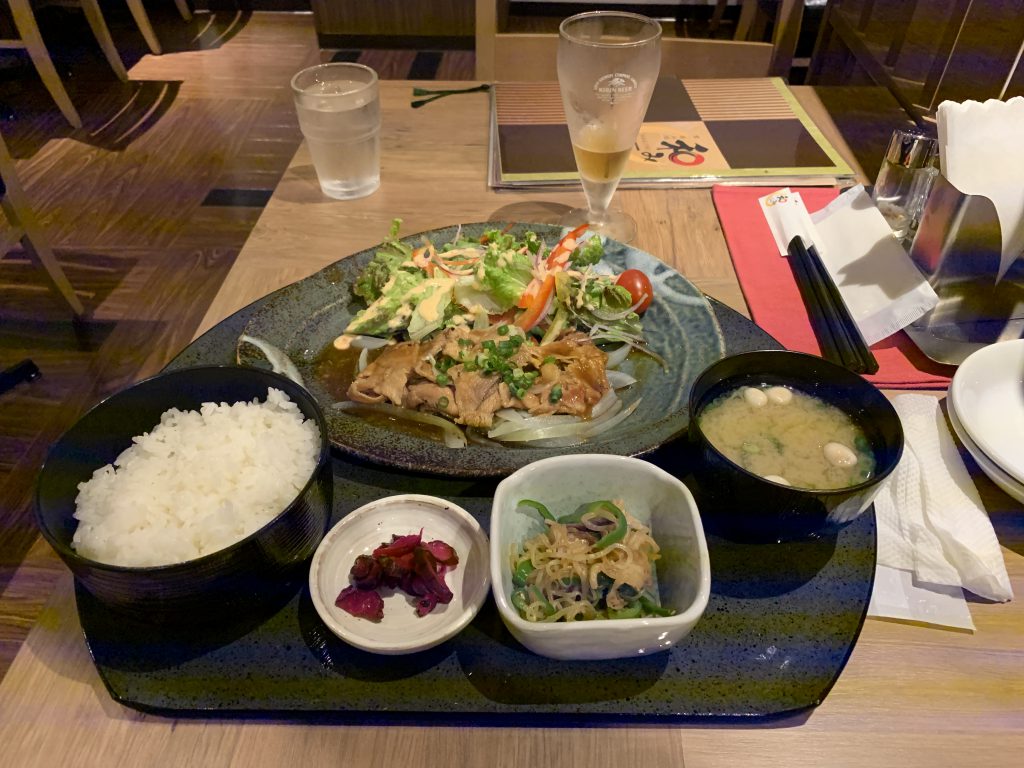
And that’s it for Sabae. It took some work to find interesting things to see but this place is definitely growing on me.
